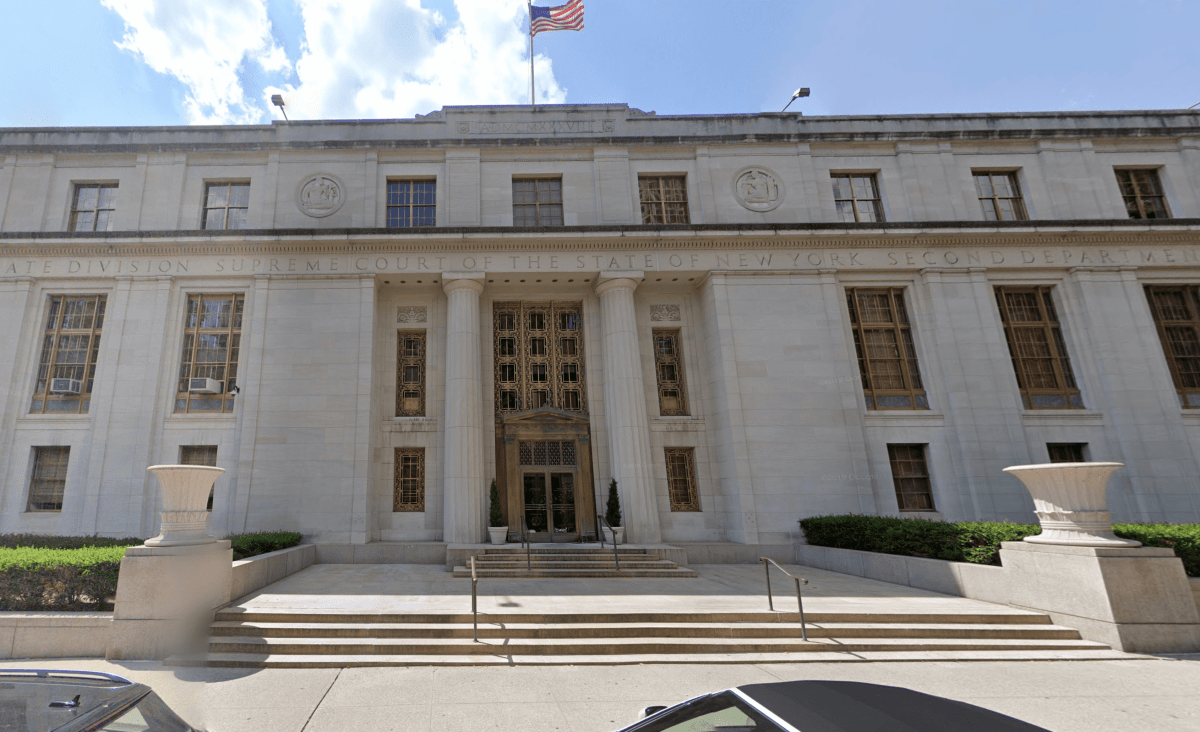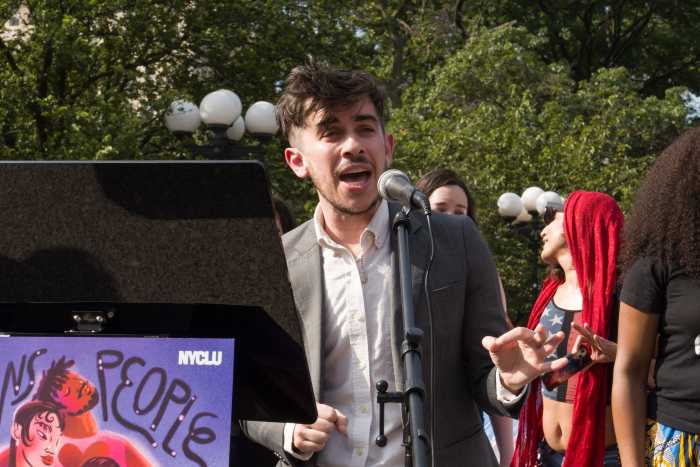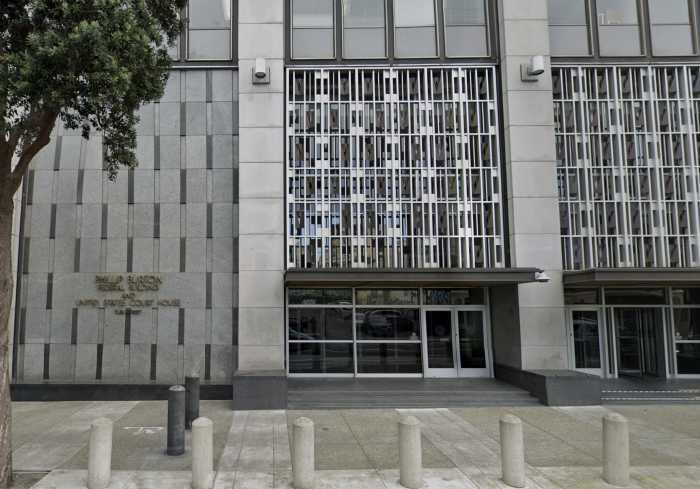The Brooklyn-based New York Appellate Division, 2nd Department, ruled on November 15 that New York’s Marriage Equality Law (MEL), which made it legal for same-sex couples to marry in New York as of July 24, 2011, should be applied retroactively to a lesbian couple’s 2005 religious marriage ceremony in deciding whether assets acquired between those two dates should be considered marital property for purposes of equitable distribution in a divorce proceeding. Writing for a unanimous four-judge panel, Justice William G. Ford wrote that the issue presented was apparently one of first impression for an appellate court in New York.
Robin Mackoff and Linda Bluemke had a traditional Jewish wedding ceremony in 2005, which was performed and “solemnized” by a rabbi in the presence of about 100 guests. Wrote Ford, “The ceremony was performed under a chuppah and the parties signed a Ketubah.” A chuppah is the traditional canopy held over the couple during the ceremony, and a Ketubah is a formal contract of marriage written in Hebrew which each of them signs. Robin and Linda continued to live together as a married couple after that ceremony. Of course, at that time New York did not issue marriage licenses to same-sex couples, so the marriage had no legal significance.
In June 2011, New York enacted the MEA, which amended the state’s marriage law to allow same-sex couples to get marriage licenses and enter into legally recognized marriages. The MEA provided that there should be no distinction between same-sex and difference-sex marriages for any purpose of New York law. In June 2015, the US Supreme Court ruled in the Obergefell case that same-sex couples have a federal constitutional right to marry, and since then courts in many states have struggled with the question whether and how to apply that ruling retroactively, since it was based on the 14th Amendment, adopted in the 1868 after the Civil War.
The question of retroactive application is easiest when a state recognized common law marriage, a doctrine under which a couple who lives together and hold themselves out to the public as spouses would have that legal status despite the lack of a marriage license or a formal marriage ceremony. New York used to have common law marriages, but a statute passed in the 1930s put an end to that practice, although New York courts will still recognize a common law marriage that was formed prior to that law or that is recognized in the state where the couple resided when they had fulfilled that state’s requirements for proving a common law marriage. Only a handful of states still recognize common law marriages, which have been abolished either by statutes or judicial decisions in the other states.
The Mackoff marriage occurred long after common law marriage was abolished in New York, so the question arising in this case is whether the religious marriage ceremony would be irrelevant or “valid” for purposes of the state’s Equitable Distribution Law.
When Robin Mackoff filed for divorce on January 23, 2019, she claimed in her petition that they were married on July 28, 2011. When Linda filed an answer to the petition several months later, she did not “refute” the July 28, 2011, marriage date, and was then awarded certain relief pending a final ruling on the divorce, including temporary spousal maintenance. Justice Ford’s opinion doesn’t reveal the situation regarding assets that Robin or Linda acquired, either jointly or separately, between their religious marriage ceremony and their civil marriage ceremony, but presumably they are substantial enough to have prompted Linda to move the court for permission to amend her answer to the petition to substitute the earlier date for the marriage. Robin opposed the motion.
Suffolk County Supreme Court Justice John J. Leo denied Linda’s motion on two grounds. Justice Leo concluded that the amendment was “patently devoid of merit” because the MEA did not go into effect until 2011 and was not retroactive, and that it would be prejudicial to Robin in light of the time that had elapsed and the temporary relief that had already been awarded to Linda since she had filed her original answer to the petition. Linda appealed this ruling.
The Appellate Division decided that Justice Leo was wrong on both issues. Although the MEA did not specifically say that it was retroactive, it did say that same-sex and different-sex marriages should be treated the same for all purposes, and there is precedent under New York Law for deeming a marriage that was performed without a license but otherwise in conformity with New York Law as “valid.” Justice Ford cited two prior New York cases, in neither of which the court found the unlicensed marriage to be valid, but in both cases there were problems with proving that all the requirements for “solemnization” of the marriage had been met. Both courts stated that if those requirements had been met, the marriages would have been deemed “valid.”
Justice Ford pointed out that although the MEA said nothing about retroactive application, it was a “remedial” statute intended to remedy a problem in the law — in this case, the denial of a fundamental right to marry to same-sex couples — and the New York State Tax Department has already interpreted it as being retroactive for parties who prove they would have marriage, usually by showing some sort of civil union ceremony or agreement between them. In addition, New York courts have recognized same-sex marriages that were legally contracted in other jurisdictions (other states that had marriage equality before New York, or Canada, for example) before July 2011 as valid. Taking these factors together, the court decided that Linda’s argument for retroactive recognition of the 2005 marriage was not “patently devoid of merit.” The court also found that it would not be prejudicial to Robin to allow the amendment of Linda’s answer. “Neither the length of time between the defendant’s original answer and her motion for leave to amend, nor the fact that the amendment may affect the plaintiff’s maintenance and equitable distribution obligations, are sufficient to establish prejudice to the plaintiff,” declared the court, sending the case back to Justice Leo while granting Linda’s motion to amend her answer.
It is still up to Justice Leo to determine, based on evidence presented by Robin and Linda, whether the 2005 marriage is valid for this purpose. The facts alleged by Linda suggest none of the problems that led earlier courts to reject unlicensed marriages allegedly performed, coincidentally, by rabbis. There was also a case of a marriage performed without a license by an Imam, but the ceremony took place in New Jersey, not New York, and New Jersey law renders invalid all unlicensed marriages, so the New York law on this subject could not be applied, and the New York court would not recognize the marriage in determining distribution of assets from the estate of one of the “spouses” who died without a will.
Michael B Schulman and Associates represents Linda, and Gilbert Balanoff represents Robin.
The other judges on the unanimous 2nd Department panel were Betsy Barros, Paul Wooten, and Barry E. Warhit.



































